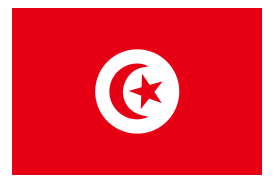Language/Tunisian-arabic/Grammar/Basic-Noun-Structure
As a Tunisian Arabic language teacher for over 20 years, I have noticed that many students struggle with noun structure. However, understanding the basic structure of nouns and how to use them is essential for building a strong foundation in Tunisian Arabic. In this lesson, you will learn the basics of noun structure in Tunisian Arabic and how to make them plural.
What are Nouns?
A noun is a word that represents a person, place, thing, or idea. In Tunisian Arabic, nouns often have gender (masculine or feminine) and number (singular or plural).
Examples:
| Tunisian Arabic | Pronunciation | English |
|---|---|---|
| مدرّس | /mudarris/ | teacher (masculine) |
| مدرّسة | /mudarrisɑ/ | teacher (feminine) |
| طالبة | /tælibɛ/ | student (feminine) |
As you can see from above, the masculine form of a noun typically ends in "-s", while the feminine form ends in "-sa".
Pluralizing Nouns
To make a noun plural in Tunisian Arabic, the suffix "-in" is added to the singular form if the noun ends in a vowel. If the noun ends in a consonant, the suffix "-een" is added instead.
Examples:
| Tunisian Arabic | Pronunciation | English |
|---|---|---|
| مدرّسين | /mudarrisin/ | teachers (masculine plural) |
| مدرّسات | /mudarrisæt/ | teachers (feminine plural) |
| طالبات | /tælibæt/ | students (feminine plural) |
In some cases, the plural form of a noun may be irregular or have a unique form altogether. Therefore, it is important to memorize each noun's plural form and usage.
Using Nouns
Nouns can be used in many different ways in Tunisian Arabic. They can be the subject of a sentence, the object of a verb, or used to provide additional information about another noun.
Here are some examples:
- Subject: The noun acts as the subject of the sentence.
Example: المدرّس يشرح الدرس. (The teacher explains the lesson.)
- Object: The noun acts as the object of a verb or preposition.
Example: أحبّ الطلاب اللغة العربية. (Students love Arabic language.)
- Adjective: The noun is used to modify or describe another noun.
Example: طالبة جادّة (Serious student; the noun طالبة "student" is modified by the adjective "جادّة" "serious")
- Indirect Object: The noun receives the direct object of a verb.
Example: أعطيت المساعدة للمريض. (I gave the help to the patient.)
In conclusion, understanding noun structure in Tunisian Arabic is crucial for developing language skills. By learning the basics presented in this lesson, you will be able to recognize and use nouns properly. In the next lesson, we will focus on subject pronouns in more detail, so stay tuned!

